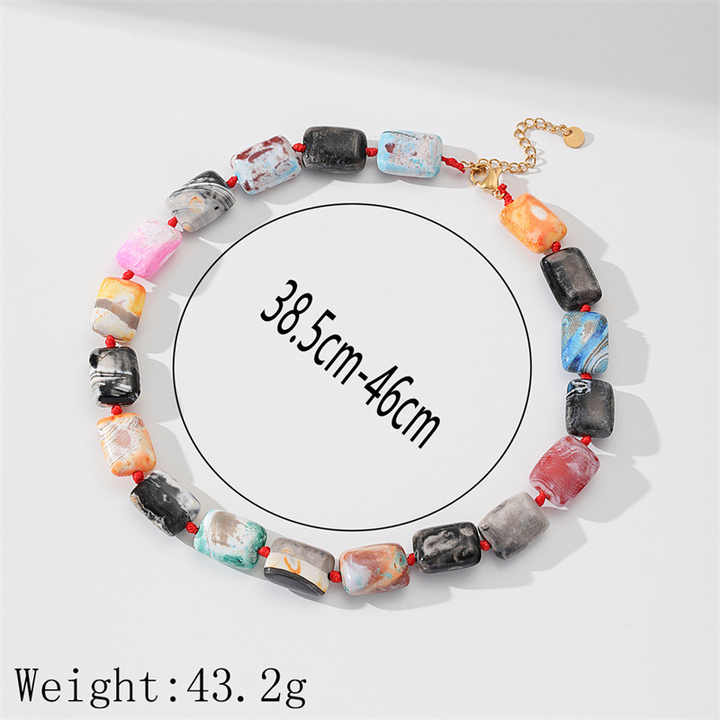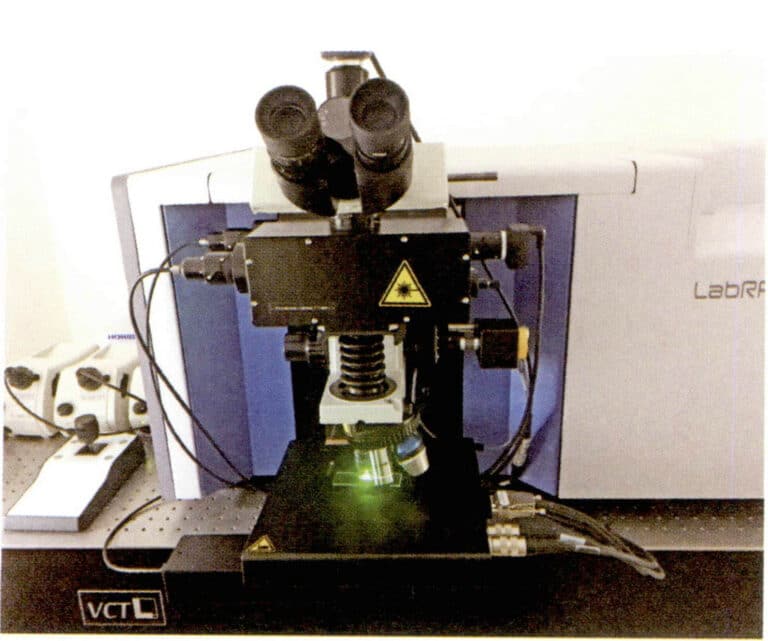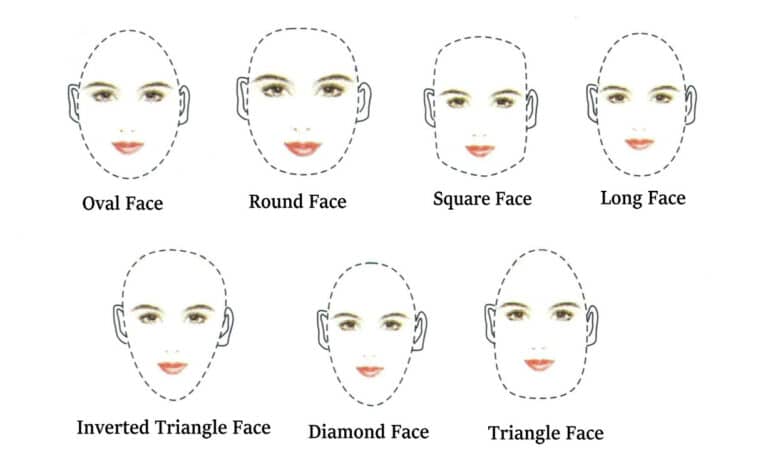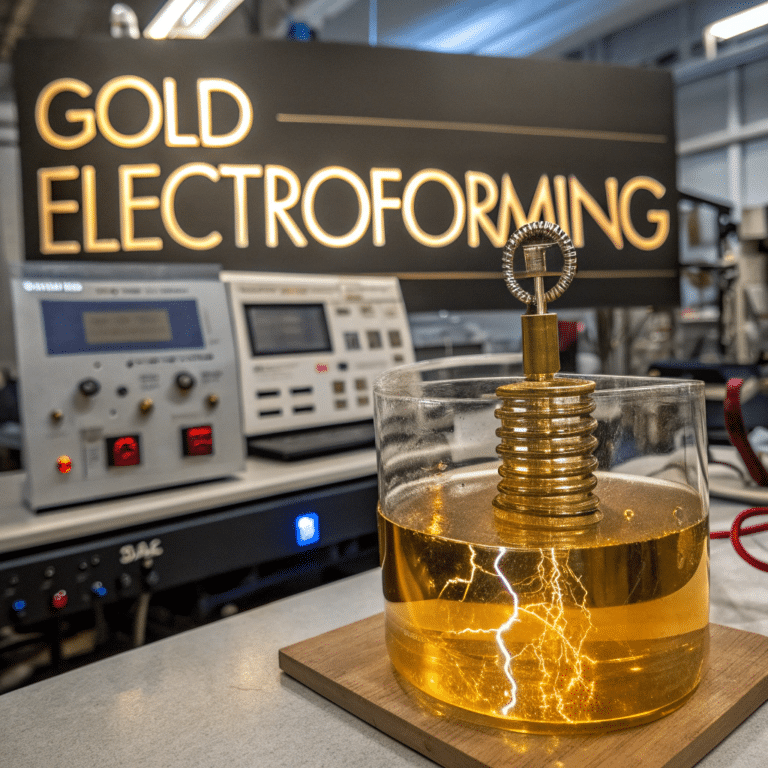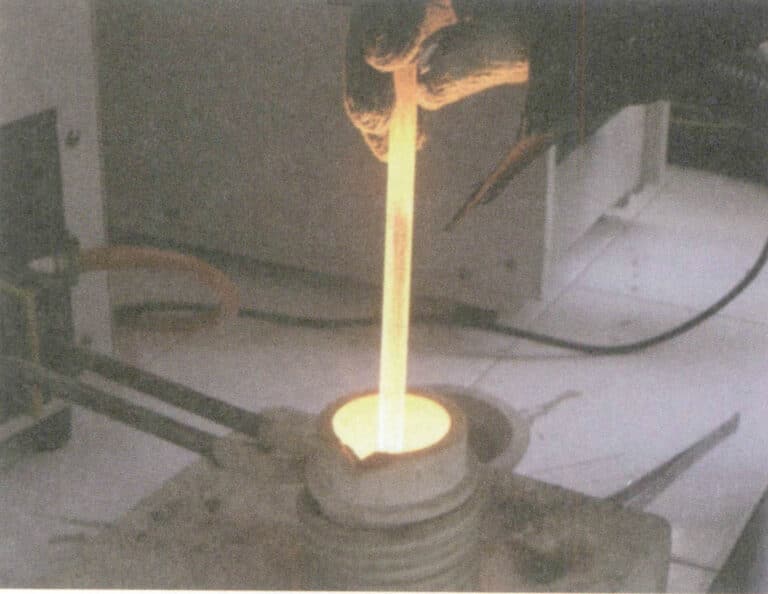One-Time To Know All Necessary Knowledges For Cubic Zircon
Çağdaş veri tabanlı kalıplama teknolojisi
Cubic zirconia, often mistaken for diamonds, hides an intriguing story of science and affordability. How does it compare to real gems and fit into modern jewelry?
Cubic zirconia is a lab-created gem with a stunning diamond-like appearance. Its affordability, diverse colors, and customizable properties make it a top choice in jewelry.
To truly understand cubic zirconia, let’s explore its structure, characteristics, and role in the market.

Kübik zirkon renkli renkler
İçindekiler
Section I What are the basic definitions and concepts of cubic zirconia, including its chemical composition and crystal structure, and how does it differ from other materials?
Cubic zirconia is a star in the world of synthetic gems, but what exactly sets it apart?
Cubic zirconia, or CZ, is a lab-created material made of zirconium dioxide. It forms a cubic crystal structure, distinct from natural zircon, which crystallizes differently.
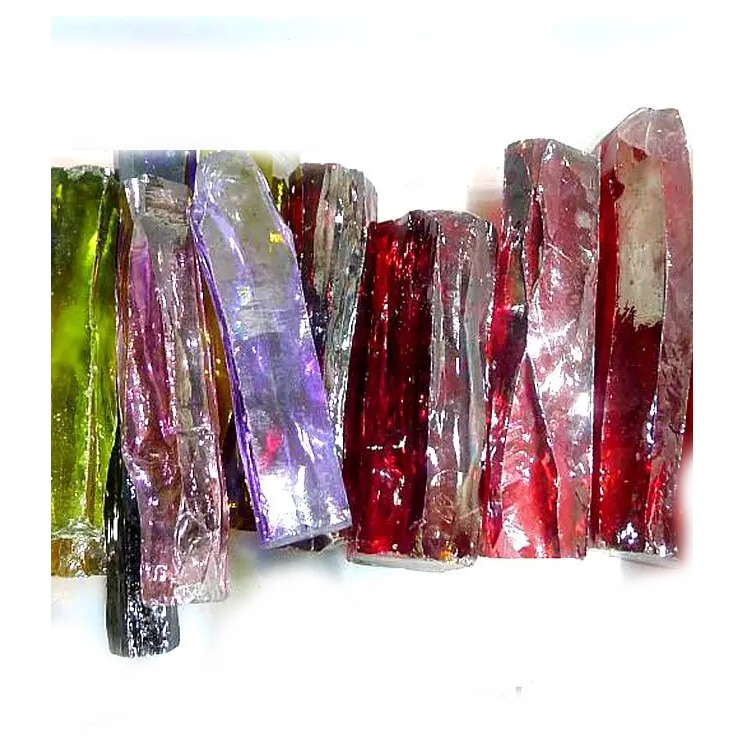
(1) Understanding Cubic Zirconia’s Unique Chemistry and Structure
Cubic zirconia (CZ) owes its popularity to its flawless appearance and ability to mimic diamonds, achieved through advanced manufacturing processes. Unlike natural gemstones, CZ is created under meticulously controlled laboratory conditions that ensure uniformity in brilliance, clarity, and overall quality. This synthetic origin eliminates impurities and inclusions commonly found in natural stones, giving CZ its signature flawlessness.
(2) Chemical Composition and Crystal Structure
Chemically, cubic zirconia is composed of zirconium dioxide (ZrO₂), making it distinct from diamonds, which consist purely of carbon atoms arranged in a cubic lattice. This difference in composition affects their physical and optical properties. While diamonds are naturally formed under immense geological pressure, CZ’s synthetic origins allow precise control over its crystal structure, stabilizing it in its cubic phase with the addition of stabilizing agents like yttrium or calcium oxide. This process ensures durability, clarity, and consistent brilliance.
(3) Distinguishing from Zircon
Zircon, another gemstone often confused with CZ due to their similar names, has a different chemical composition: zirconium silicate (ZrSiO₄). Zircon is a natural stone known for its high refractive index and dispersion, but it is generally less durable than CZ. Its lower hardness (7.5 on the Mohs scale compared to CZ’s 8.5) and higher tendency to chip make it less suitable for everyday wear. Additionally, zircon’s colors and natural inclusions set it apart from CZ’s flawless synthetic brilliance.
(4) Affordability and Optical Appeal
CZ’s unique chemistry and manufacturing precision allow it to replicate the optical properties of diamonds at a fraction of the cost. With a refractive index of 2.15–2.18 and dispersion of 0.058–0.066, CZ delivers impressive brilliance and fire. This makes it an attractive option for jewelry buyers seeking beauty and luxury without the high price tag of natural diamonds.
In conclusion, cubic zirconia’s chemistry, controlled production, and flawless appearance make it a versatile and affordable alternative to natural gemstones, bridging the gap between luxury and accessibility.
Section II How does cubic zirconia compare to diamonds in terms of appearance, hardness, density, refractive index, and dispersion?
Diamonds set the standard, but how does cubic zirconia match up?
Cubic zirconia mimics diamonds in brilliance and fire but falls short in hardness and density. Its refractive index and dispersion provide a comparable sparkle.
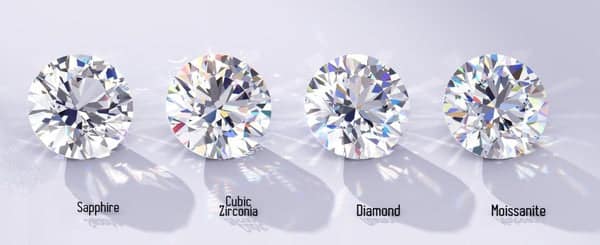
Diamonds score 10 on the Mohs scale, representing the pinnacle of hardness among natural substances, whereas cubic zirconia (CZ), ranking at 8.5, is still impressively durable but more prone to scratches with regular wear. CZ’s density, reflected in its higher specific gravity, makes it feel heavier than diamonds of equivalent size. The refractive index of 2.15–2.18 and strong dispersion (0.058–0.066) give CZ its dazzling rainbow effect, but this can sometimes appear overly vibrant, distinguishing it from the subtler fire of diamonds. Additionally, CZ’s lack of natural inclusions results in a “too perfect” appearance, making it less likely to be mistaken for natural diamonds.
Diamond vs. Cubic Zirconia: Key Differences
| Mülkiyet | Elmas | Kübik Zirkonya (CZ) |
|---|---|---|
| Sertlik (Mohs) | 10 | 8.5 |
| Density (g/cm³) | 3.5 | 5.6–6.0 |
| Refractive Index (RI) | 2.42 | 2.15–2.18 |
| Dispersion | 0.044 | 0.058–0.066 |
| Açıklık | Contains natural inclusions | Flawless, synthetic clarity |
| Sparkle Effect | Subtle fire | Pronounced rainbow effect |
Section III What is the manufacturing process of cubic zirconia, including the raw materials and techniques used in its laboratory synthesis?
Ever wondered how cubic zirconia achieves its flawless look?
Cubic zirconia is created using zirconium dioxide powder, melted and stabilized with yttria, forming crystals under high temperatures.
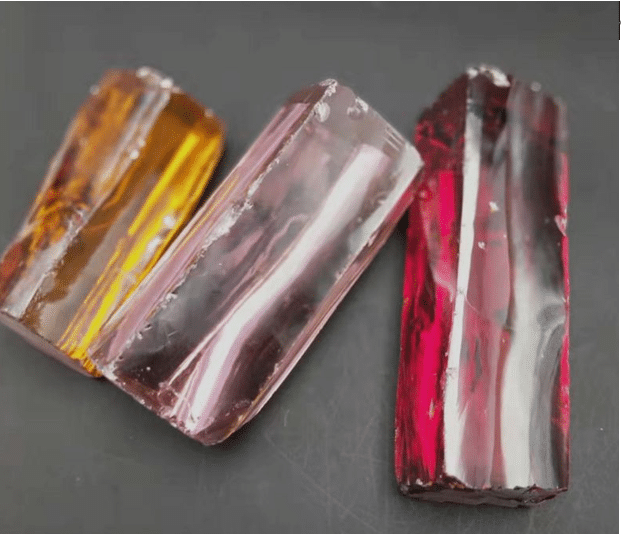
The production of cubic zirconia (CZ) begins with zirconium dioxide (ZrO₂), a key compound that forms the basis of this synthetic gemstone. Stabilizing agents like yttrium oxide or calcium oxide are added to the mixture to ensure the cubic crystalline structure remains stable during and after the cooling process. This step is critical because, under normal conditions, zirconium dioxide naturally forms monoclinic crystals, which lack the desired optical properties.
The skull-melting method is a groundbreaking technique used in CZ synthesis. In this process, raw materials are heated to nearly 4,982°F (2,750°C) in a cold crucible. This crucible uses radio-frequency induction to heat the materials, and a water-cooled exterior prevents contamination. As the materials melt, a thin shell of solidified zirconia forms, acting as a self-contained barrier. This ensures the molten interior remains pure and homogeneous, critical for achieving the optical brilliance CZ is known for.
Once the cooling process begins, controlled rates are maintained to ensure uniformity. Improper cooling can lead to phase separations or structural inconsistencies. The stabilized cubic crystals are then carefully cut and polished to create gemstones that emulate the visual characteristics of diamonds. This precise control over material selection, synthesis, and finishing ensures CZ achieves its flawless appearance, making it highly suitable for mass production and diverse applications.
Key Features of Cubic Zirconia Production:
- Controlled Synthesis: Stabilizing agents prevent phase changes, ensuring durability and optical clarity.
- Skull-Melting Method: Advanced technology using high temperatures and controlled environments for purity and uniformity.
- Optical Precision: Polished crystals exhibit a refractive index close to diamonds, enhancing their sparkle.
- Mass Production Capability: Consistent quality and scalability make CZ ideal for jewelry and industrial uses.
- Customization: Color variants achieved through doping with elements like cobalt, cerium, or nickel for versatile design options.
The perfection of this process underscores CZ’s appeal as a high-quality, affordable diamond alternative and a material with broad applicability beyond adornment.
Section IV What is the hardness and durability of cubic zirconia according to the Mohs scale, and how does it resist wear and tear?
Durability is key for any gem. How does cubic zirconia hold up?
With a Mohs hardness of 8.5, cubic zirconia resists scratches better than most gems but is softer than diamonds and moissanite.
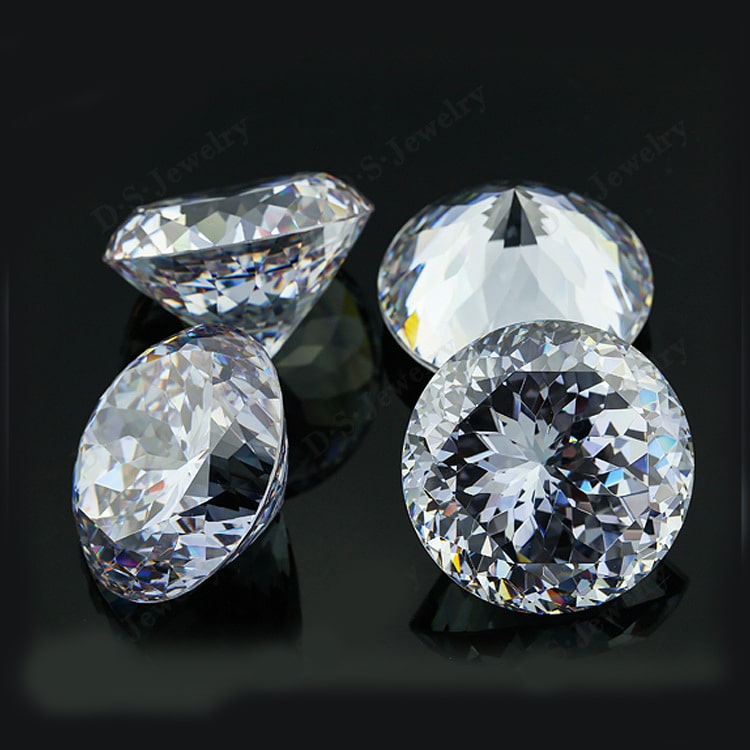
Cubic zirconia (CZ), with a Mohs hardness rating of 8.5, is impressively durable for daily wear, but it is not immune to wear and tear. Over time, its surface may develop fine scratches, especially if it comes into contact with abrasive materials. Unlike diamonds, which are renowned for their unyielding hardness, CZ’s relatively softer nature necessitates more cautious handling. This is particularly true for jewelry pieces such as rings and bracelets, which are more likely to encounter rough surfaces during wear.
Another factor to consider is CZ’s brittleness. While it has high hardness, this also makes the material less flexible under sharp impacts. If struck or dropped, cubic zirconia is prone to chipping or breaking, particularly along vulnerable edges. This characteristic highlights the importance of protective settings in jewelry design, such as bezel or halo settings, which can shield the gemstone from accidental damage.
Despite these limitations, CZ’s affordability stands as a major advantage. The cost of replacing a CZ stone is minimal compared to replacing a diamond, making it an attractive option for those seeking beauty without significant financial risk. Furthermore, its lab-grown nature ensures consistent quality and availability, enabling quick and easy replacement.
Proper care is essential to maintain the brilliance and longevity of cubic zirconia. Avoiding exposure to harsh chemicals, such as cleaning agents or chlorinated water, is crucial, as these can cloud the surface over time. Storing CZ jewelry separately, preferably in soft pouches or individual compartments, prevents scratches from other pieces. Occasional cleaning with mild soap and a soft brush can restore its sparkle and clarity.
Tips for Maximizing the Life of Cubic Zirconia:
- Avoid Rough Contact: Minimize exposure to abrasive surfaces to prevent scratches.
- Choose Protective Settings: Opt for bezel or halo settings to shield stones from impacts.
- Clean with Care: Use mild soap, water, and a soft brush to maintain brilliance.
- Store Separately: Use individual compartments or soft pouches to prevent contact with other jewelry.
- Limit Chemical Exposure: Remove CZ jewelry before swimming or using cleaning products.
By following these guidelines, cubic zirconia can remain a stunning, cost-effective alternative to diamonds for years to come. Its combination of beauty, affordability, and versatility makes it an enduring choice for both casual and formal jewelry.
Section V How can the color of cubic zirconia be modified through doping, and what is its natural color?
Cubic zirconia isn’t always clear—how is its color controlled?
Natural cubic zirconia is colorless, but doping with metal oxides creates a spectrum of hues, mimicking gemstones like rubies or sapphires.
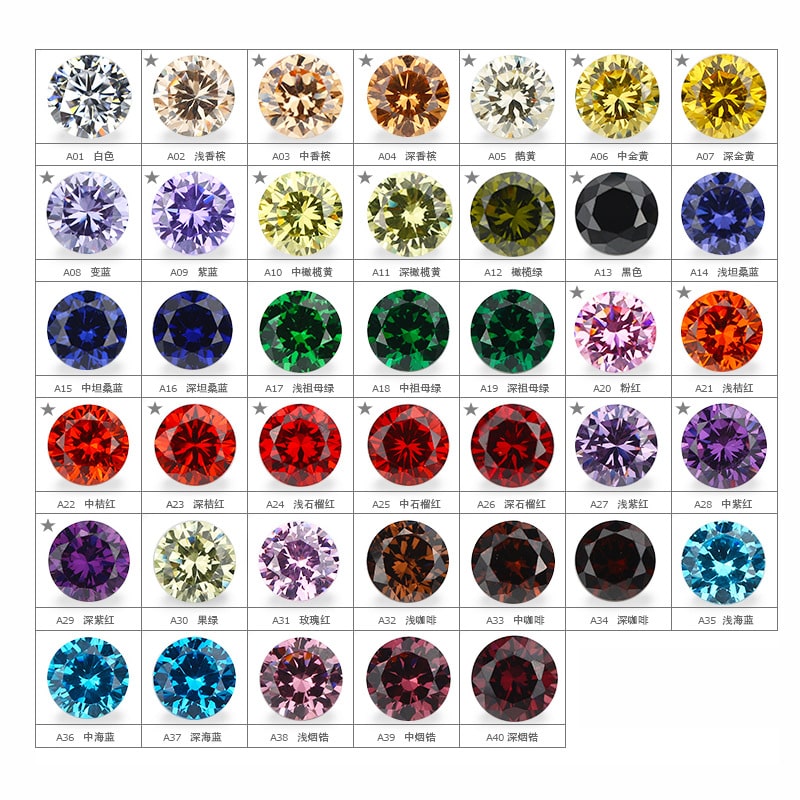
The ability to introduce specific colors into cubic zirconia (CZ) through the addition of dopants during synthesis is one of its most remarkable features. By carefully incorporating elements like cerium, cobalt, or chromium, manufacturers can create a spectrum of vibrant hues that mimic the appearance of precious and semi-precious gemstones. This process not only enhances CZ’s versatility but also makes it a sustainable and cost-effective alternative to natural stones, which are often rare, expensive, or ethically challenging to source.
Cerium, a common dopant, produces a warm palette ranging from yellow to orange and red, making CZ an excellent substitute for citrine, topaz, and ruby. Cobalt creates striking blue tones reminiscent of sapphires, while chromium is used to achieve green shades, evoking emeralds or peridots. These color variations are achieved by modifying the crystal’s optical absorption properties during synthesis, which directly influences how light interacts with the gemstone. The result is a vibrant and realistic appearance, tailored to consumer demands.
This customizability also opens doors for creative jewelry design. By incorporating multicolored CZ stones into a single piece, designers can produce innovative and visually stunning creations that cater to modern tastes. Furthermore, the affordability of CZ allows for experimentation, enabling jewelers to explore bold and intricate designs without the high costs associated with natural gemstones.
From an ethical standpoint, synthetic CZ eliminates the need for extensive mining, reducing environmental impact and avoiding issues related to conflict gemstones. This positions CZ as a desirable option for environmentally conscious consumers and brands prioritizing sustainability.
Colors Achieved in Cubic Zirconia Through Dopants:
- Yellow, Orange, Red: Cerium
- Blue: Cobalt
- Green: Krom
- Pink: Erbium, Europium
- Champagne: Holmium
- Brown-Violet: Manganez
- Purple: Neodymium
- Golden Brown: Titanium
- Lilac-Violet: Cobalt and Chromium mixtures
In conclusion, the ability to engineer such a diverse color palette transforms cubic zirconia into an adaptable material for jewelry and design. Its cost-effectiveness, ethical production, and striking beauty make it a compelling choice for both consumers and designers seeking vibrant alternatives to natural gemstones.
Section VI What are the optical properties of cubic zirconia, such as its refractive index, dispersion, and luster?
Cubic zirconia’s brilliance often surprises first-time buyers. But what makes it shine so brightly?
Cubic zirconia features a high refractive index (2.15–2.18), exceptional dispersion, and a glassy luster, mimicking diamond-like sparkle.
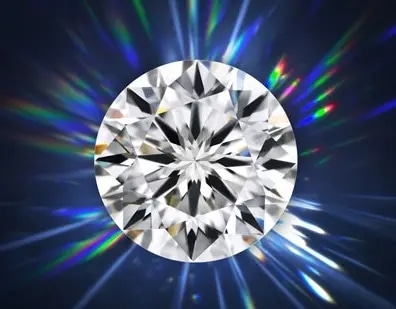
Cubic zirconia’s (CZ) optical properties are at the core of its allure, offering a dazzling brilliance that rivals, and in some aspects even surpasses, natural diamonds. Its high refractive index, measuring between 2.15 and 2.18, allows it to bend and reflect light more effectively than most gemstones, creating a remarkable sparkle that makes it visually striking. This characteristic ensures that a significant amount of light enters the stone and exits in a dramatic display of brilliance.
The stone’s dispersion, or “fire,” measures between 0.058 and 0.066, notably higher than that of diamonds, which have a dispersion of 0.044. This heightened dispersion splits light into a vivid spectrum of rainbow colors, giving CZ an intense and vibrant sparkle. While this brilliance is a major selling point, it can sometimes appear overly pronounced under natural lighting, which can distinguish CZ from diamonds to trained observers or discerning consumers. However, for many, this quality enhances its charm, especially in jewelry designs meant to stand out.
The luster of CZ is another noteworthy feature. Its glassy, mirror-like surface reflects light in a manner that adds depth and dimension to the stone, making it an excellent substitute for high-quality natural gems. The lack of inclusions further enhances its optical clarity, ensuring a consistent sparkle across the entire stone.
Understanding these properties is critical for both jewelers and buyers. Jewelers can craft designs that maximize CZ’s optical advantages, while consumers can make informed decisions based on their aesthetic preferences and the intended use of their jewelry.
These optical properties are the reason CZ is so popular in fine and fashion jewelry. They combine to create a gemstone that not only mimics but also sometimes exceeds the visual impact of natural stones, offering unmatched value and versatility.Optical Properties of Cubic Zirconia
| Mülkiyet | Kübik Zirkonya (CZ) | Elmas | Significance |
|---|---|---|---|
| Kırılma İndisi | 2.15–2.18 | 2.42 | Controls how much light enters and exits. |
| Dispersion | 0.058–0.066 | 0.044 | Responsible for the "fire" or rainbow sparkle. |
| Parlaklık | Glassy (Adamantine-like) | Adamantine | Adds depth and brilliance to the stone's surface. |
| Açıklık | Flawless (synthetic) | Natural inclusions | Uniform sparkle without interruptions. |
Section VII What is the difference between the thermal conductivity of cubic zirconia and diamond, and how is it used for identification?
How do experts tell cubic zirconia and diamonds apart?
Diamonds are excellent thermal conductors, while cubic zirconia is not. This difference is key to gem identification.
Diamonds and cubic zirconia (CZ) differ significantly in their thermal conductivity, a property that plays a critical role in distinguishing the two materials. Diamonds are excellent thermal conductors due to their unique carbon lattice structure, enabling heat to dissipate almost instantly. This characteristic makes diamonds feel cool to the touch, even after being handled for some time. In contrast, CZ is a thermal insulator. Its synthetic zirconium dioxide composition retains heat, causing it to feel warmer when held. This fundamental difference has become a cornerstone for identifying these stones.
Thermal conductivity testers, or diamond testers, leverage this disparity to provide a reliable method of distinguishing diamonds from diamond simulants like CZ. These devices measure how quickly heat transfers through the material. Diamonds will rapidly dissipate heat, giving a clear reading that confirms authenticity, while CZ will fail this test due to its insulating properties. In the jewelry industry, this non-invasive testing method is highly valued for its speed, accuracy, and ease of use.
While thermal conductivity is definitive, jewelers and consumers also rely on visual differences. For instance, CZ exhibits stronger rainbow dispersion compared to the subtle fire of diamonds, and its surface polish can appear glassier. These visual clues, combined with thermal testing, ensure comprehensive evaluation.
The availability of advanced thermal testers has bolstered consumer trust, ensuring accurate identification and reducing the risk of misrepresentation in both retail and manufacturing. This technology has become indispensable, especially for jewelers and buyers navigating an increasingly complex market of natural, synthetic, and simulated gemstones.
Section VIII What is the price and market position of cubic zirconia due to its low cost?
Cubic zirconia has disrupted the gemstone market. But why is it so affordable?
Cubic zirconia’s low production costs and lab-controlled synthesis make it an accessible alternative to natural gems.

Cubic zirconia (CZ) offers unparalleled affordability compared to diamonds, largely due to its lab-created origin and efficient manufacturing processes. Unlike diamonds, which require extensive mining, sorting, and cutting to achieve a saleable state, CZ production is streamlined and scalable. This allows manufacturers to produce high-quality stones in large volumes at a fraction of the cost. The controlled environment eliminates variables like inclusions or irregularities common in natural stones, ensuring consistency and uniformity across all produced pieces. For budget-conscious buyers, CZ offers the beauty of diamonds without the hefty price tag, making it a popular choice for fashion and everyday jewelry.
The affordability of CZ creates opportunities for diverse markets. It allows consumers to enjoy luxurious-looking pieces at accessible price points, catering to individuals who value aesthetics over rarity. Additionally, for jewelers, CZ provides a cost-effective option for creating intricate designs, enabling bold experimentation with minimal financial risk. This affordability is particularly advantageous in markets such as bridal jewelry, where the appearance of luxury often outweighs the need for authenticity.
However, CZ faces criticism for its lack of exclusivity and prestige. Diamonds, as natural gemstones, carry intrinsic value tied to their rarity and geological origin, which CZ cannot replicate. The emotional and cultural significance attached to diamonds—particularly in engagements and milestones—remains unmatched by simulants. Nevertheless, CZ finds its niche among buyers prioritizing value and style over tradition, ensuring its ongoing relevance in the jewelry industry.
Price Comparison: Cubic Zirconia vs. Diamonds
| Mülkiyet | Kübik Zirkonya (CZ) | Elmas | Significance |
|---|---|---|---|
| Cost | $0.3 per carat | $1,800+ per carat | CZ is significantly more affordable. |
| Production | Lab-created, scalable | Natural, resource-intensive | Low-cost production enables mass availability. |
| Market Value | Low (no resale value) | High (resale potential) | Diamonds retain value, adding to their prestige. |
| Uniformity | Consistent, flawless | Varies due to inclusions | CZ ensures predictable quality across pieces. |
| Associated Prestige | Düşük | Yüksek | Diamonds symbolize rarity and exclusivity. |
Section IX What are the common uses of cubic zirconia in jewelry, lasers, and medical fields?
Beyond jewelry, cubic zirconia finds uses in surprising industries. But why?
Cubic zirconia’s hardness and optical properties make it valuable in jewelry, precision instruments, and even medical applications.

Cubic zirconia (CZ) is a remarkably versatile material, with applications that span beyond its popular role in jewelry. In the fashion and fine jewelry industries, CZ’s affordability and visual resemblance to diamonds make it a cornerstone for accessible luxury. Designers leverage its low cost to create intricate, bold pieces that would be prohibitively expensive with natural stones. Furthermore, its availability in a variety of colors, achieved through doping, allows for the simulation of a range of precious gemstones, expanding its appeal.
Outside of adornment, CZ’s optical properties—such as high refractive index and clarity—make it invaluable in technology. Its resistance to thermal shock and stability under high temperatures have positioned CZ as a critical material for optical components in lasers, prisms, and sensors. These attributes enable precision and reliability in advanced equipment, making CZ an indispensable resource in the tech industry.
In medicine, CZ’s hardness, biocompatibility, and chemical inertness make it suitable for dental implants, surgical tools, and other biomedical applications. Its non-reactive surface prevents adverse interactions with human tissues, while its durability ensures long-term performance.
This dual nature of CZ—blending aesthetic appeal with functional excellence—underscores its importance across industries. Its adaptability continues to drive innovation, proving that CZ is far more than a diamond simulant; it is a modern material of significant utility.
Section X How should cubic zirconia jewelry be maintained and cleaned?
Cubic zirconia sparkles when new, but how can it stay that way?
Regular cleaning with mild soap and water, avoiding harsh chemicals, and proper storage preserve cubic zirconia’s brilliance.

(1) Understand CZ’s Characteristics:
Cubic zirconia (CZ), while known for its brilliance and affordability, requires proper care to preserve its beauty over time. Due to its relative softness compared to diamonds, CZ is susceptible to surface scratches, clouding, and dulling caused by oils, dirt, and abrasives. These factors can diminish its luster if not managed correctly, making routine maintenance essential for long-term enjoyment.
(2) Cleaning Instructions:
Cleaning CZ jewelry is straightforward yet effective. Use a soft-bristle brush with warm soapy water to gently remove accumulated dirt and oils. Avoid harsh chemicals or abrasive cleaners, as these can damage the stone’s surface or affect the surrounding metal setting. While ultrasonic cleaners are popular for other gemstones, they are not recommended for CZ. The vibrations can loosen the settings or cause micro-damage to the stone, reducing its integrity and visual appeal.
(3) Storage Recommendations:
Storage also plays a crucial role in maintaining CZ jewelry. Because CZ is prone to scratches when in contact with harder materials, it should always be stored separately. A soft pouch, individual compartment, or jewelry box lined with fabric ensures the stone remains scratch-free. Avoid placing CZ jewelry in crowded spaces where it might rub against other pieces, particularly diamonds or metals with higher hardness levels.
(4) Routine Maintenance:
By incorporating these habits into your jewelry care routine, you can protect CZ’s signature sparkle. Its affordability and versatility make it an attractive alternative to diamonds, and proper care ensures it continues to shine brilliantly, preserving its value and charm for years to come.
(5) Benefits of Proper Care:
Proper care is essential to maintain the brilliance and longevity of cubic zirconia. Its affordability and versatility make it a popular choice for those seeking luxury on a budget. Adopting cleaning, storage, and maintenance habits helps ensure that your CZ jewelry remains stunning over time, maintaining its appeal as a cost-effective diamond alternative.
Copywrite @ Sobling.Jewelry - Özel takı üreticisi, OEM ve ODM takı fabrikası
Section XI What is the difference between cubic zirconia and zircon, and why are they often confused?
Cubic zirconia and zircon share a name, but are they related?
Cubic zirconia is synthetic, while zircon is a natural gemstone. Their composition, origin, and properties are vastly different.
Zircon and cubic zirconia (CZ) are two distinct materials that often cause confusion due to their similar names but vastly different origins and properties. Zircon is a naturally occurring gemstone, formed over millions of years, and is composed of zirconium silicate (ZrSiO₄). Its natural origin lends it a unique charm, with brilliance and a spectrum of colors ranging from colorless to golden, blue, and red. As a result, zircon is prized in the jewelry industry and commands higher prices, particularly for rare, well-cut stones with vibrant hues.
Cubic zirconia, on the other hand, is a lab-created material made from zirconium dioxide (ZrO₂). It was developed as a cost-effective diamond simulant and is produced in controlled environments to ensure consistent quality and flawless appearance. Unlike zircon, CZ is available in a wide variety of colors, achieved through doping with various elements. Its affordability and optical similarity to diamonds make it a popular choice for fashion jewelry, but its synthetic nature distinguishes it from the rarity and prestige of natural gemstones like zircon.
The confusion between zircon and CZ often stems from their similar names and visual characteristics. This can lead to misunderstandings, especially among buyers who are not familiar with gemology. To address this, clear labeling and consumer education are essential in the jewelry industry. Retailers should emphasize the differences in origin, composition, and value, enabling consumers to make informed purchasing decisions. By promoting transparency, the industry can build trust and highlight the unique qualities of both zircon and cubic zirconia, ensuring they are appreciated for their distinct roles in the world of gemstones.
Section XII Is cubic zirconia a "real" gemstone, and what is its status as a synthetic gem?
Does “synthetic” mean fake? Not necessarily!
Cubic zirconia is a synthetic gemstone, offering real beauty and functionality without being naturally mined.
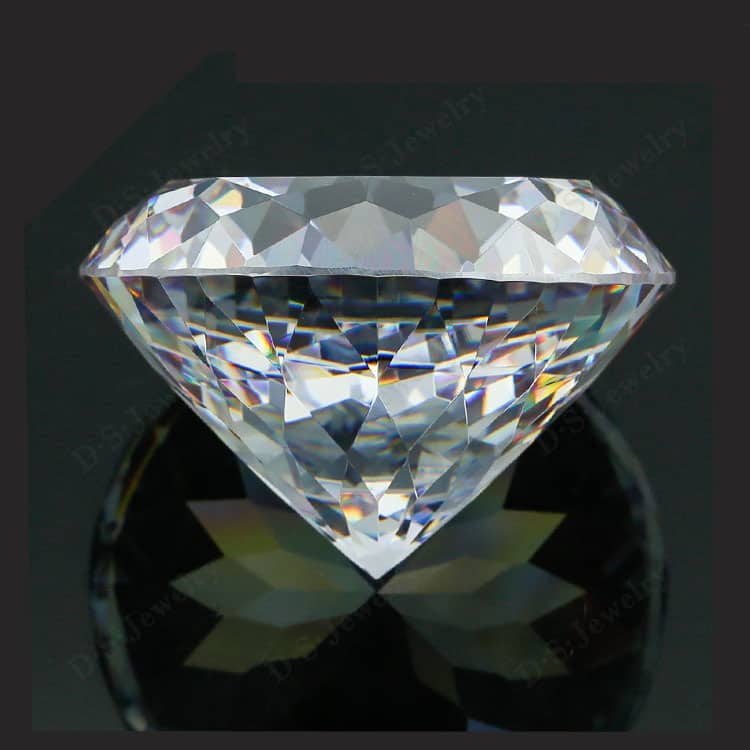
Synthetic gemstones like cubic zirconia (CZ) bridge the gap between natural beauty and modern innovation. Created in controlled laboratory environments, these stones replicate many of the physical and optical properties of their natural counterparts. In the case of CZ, its high refractive index, strong dispersion, and flawless appearance closely mimic the brilliance and fire of diamonds, offering buyers an affordable yet stunning option for their jewelry needs.
While the term “synthetic” is often misunderstood, it does not imply inferiority. Instead, it underscores the advanced technology and craftsmanship involved in producing gemstones that rival or even surpass natural stones in certain aspects, such as consistency and customizability. Unlike natural gems, which may have inclusions and irregularities due to their geological formation, synthetic stones like CZ are designed to be flawless, allowing them to meet the highest aesthetic standards.
For buyers, the appeal of synthetic gemstones extends beyond their beauty. CZ and similar lab-grown options offer ethical and sustainable alternatives to mined gemstones. Mining processes often involve environmental disruption and labor concerns, issues that are absent in the production of synthetic stones. This aligns with the growing consumer demand for eco-conscious and conflict-free jewelry.
Furthermore, the affordability of CZ democratizes access to high-quality, luxury-looking jewelry. Buyers can enjoy intricate designs and vibrant colors at a fraction of the cost of natural stones, enabling more people to experience the elegance of fine jewelry without compromising on budget or values.
In embracing synthetic gemstones, the jewelry industry celebrates both tradition and innovation. CZ exemplifies how science can enhance accessibility while maintaining beauty, making it a preferred choice for sustainability-focused and cost-conscious consumers.
Section XIII What are the quality grading standards of cubic zirconia, such as A to AAAAA?
Not all cubic zirconia is created equal. How is its quality measured?
Cubic zirconia is graded from A to AAAAA based on factors like clarity, cut, and polish. AAAAA represents the highest quality.

The quality grading system for cubic zirconia (CZ) plays a crucial role in determining its value, appearance, and suitability for various jewelry designs. This system evaluates factors like cut precision, clarity, polish, and overall craftsmanship, creating a spectrum of grades to match diverse market needs.
At the entry level, A-grade CZ stones are the most affordable. These stones often lack precise cutting and clarity, with visible imperfections such as inclusions or uneven facets. They are typically used in low-cost fashion jewelry, where affordability takes precedence over perfection. While they provide a diamond-like appearance from a distance, their flaws are noticeable upon closer inspection, making them best suited for casual, budget-conscious buyers.
In contrast, AAAAA-grade CZ stones are nearly flawless. These premium-quality stones are crafted with meticulous attention to detail, featuring perfect symmetry, excellent clarity, and a high polish that enhances their brilliance. Their superior craftsmanship allows them to closely mimic the appearance of natural diamonds, making them a popular choice for high-end jewelry. This grade is often used in premium designs where the goal is to achieve an elegant, luxurious look.
Between these extremes are intermediate grades, such as AAA-grade stones, which strike a balance between quality and cost. These stones offer better clarity and cut than A-grade options but are more affordable than AAAAA-grade stones, catering to mid-range jewelry markets.
Jewelers and manufacturers select CZ grades based on their target audience. Higher grades are preferred for premium and luxury designs, where appearance is paramount, while lower grades fulfill the demand for budget-friendly jewelry.
Quality Grading of Cubic Zirconia
| Sınıf | Özellikler | Common Uses |
|---|---|---|
| A-grade | Affordable, visible flaws, less precise cut and clarity, lower polish quality | Budget-friendly jewelry, casual designs |
| AAA-grade | Moderate clarity, better cut, good symmetry and polish | Mid-range jewelry, balance of quality/cost |
| AAAAA-grade | Near-flawless, excellent cut, symmetry, polish, and exceptional brilliance | High-end jewelry, premium designs |
Section XIV How can one distinguish cubic zirconia from diamonds using visual inspection and professional testing?
Cubic zirconia may look like a diamond, but certain characteristics give it away.
Cubic zirconia can be identified by its higher dispersion, softer hardness, and heat retention compared to diamonds.

Under visual inspection, cubic zirconia (CZ) stands out for its strong rainbow dispersion, a property that creates an almost “too perfect” brilliance compared to the subtler sparkle of diamonds. This heightened dispersion, while dazzling, can give CZ an artificial appearance under certain lighting conditions. Additionally, CZ’s density, which is approximately 1.65 times that of diamonds, makes it noticeably heavier, a characteristic discernible when handled. These visual and physical traits provide clues to distinguishing CZ from natural diamonds.
A closer examination with a jeweler’s loupe reveals CZ’s uniformity and absence of inclusions. Natural diamonds typically contain small imperfections, such as mineral traces or structural irregularities, which add to their authenticity. CZ’s flawless surface, while desirable, is another indication of its synthetic origin. However, the high quality of modern imitations often requires more than visual inspection for accurate identification.
Thermal conductivity testing is a definitive method to distinguish CZ from diamonds. Diamonds are excellent heat conductors, dissipating heat almost instantly, while CZ is a thermal insulator, retaining heat for longer. Advanced testers, including diamond testers and spectrometers, are used when visual and tactile inspections prove inconclusive.
Methods and Equipment for Identifying Cubic Zirconia:
- Visual Inspection: Observing enhanced rainbow dispersion and perfect clarity.
- Jeweler’s Loupe: Reveals inclusions in diamonds or the absence thereof in CZ.
- Thermal Conductivity Tester: Measures heat dissipation to distinguish between CZ and diamonds.
- pecific Gravity Testing: Determines density differences between CZ and diamonds.
- Spectroscopy Analysis: Analyzes optical and chemical properties for advanced differentiation.
- UV Light Testing: Identifies fluorescence patterns unique to CZ or diamonds.
These methods and tools empower jewelers and gemologists to accurately identify CZ, ensuring transparency and trust in the jewelry market while educating consumers about the distinct properties of this synthetic gem.
Section XV How does cubic zirconia impact the diamond market as a diamond simulant?
Cubic zirconia has changed how people shop for gems. But has it affected the diamond industry?
Cubic zirconia appeals to budget-conscious consumers, but its presence does not diminish the allure of natural diamonds.

Cubic zirconia (CZ) has established itself as a key player in the jewelry industry by balancing affordability and aesthetics. Its ability to replicate the brilliance and fire of diamonds has made it a preferred choice for consumers who desire luxurious designs without the associated high costs. This affordability allows a broader demographic to enjoy jewelry that mimics the elegance of diamonds, democratizing access to high-quality adornments that were once exclusive to wealthier buyers.
However, natural diamonds retain their unassailable position as symbols of rarity, permanence, and emotional significance. The geological history and unique imperfections of natural diamonds imbue them with character and authenticity that CZ, as a synthetic alternative, cannot replicate. This makes diamonds especially meaningful for engagement rings, heirlooms, and milestones, where tradition and sentimentality outweigh cost considerations.
CZ has not displaced diamonds but has instead complemented the market. It caters to segments focused on affordability, versatility, and trend-driven designs. Fashion jewelry, which thrives on creativity and accessibility, has particularly benefited from CZ’s adaptability. Jewelers can experiment with bold, intricate styles without the prohibitive expense of natural stones, making CZ a favorite in mass-market and custom jewelry.
By bridging the gap between luxury and affordability, CZ enriches the jewelry market. It provides options for diverse consumer needs, whether prioritizing the symbolism of natural diamonds or the practical elegance of cubic zirconia. This coexistence highlights the distinct value each brings to a dynamic industry, ensuring that both diamonds and CZ remain relevant and sought-after in their respective niches.
Section XVI What are the advantages and disadvantages of cubic zirconia, including its low cost, diverse colors, poor durability, and easy wear and tear?
Is cubic zirconia worth it? Let’s weigh the pros and cons.
Cubic zirconia offers affordability and versatility but lacks the durability and longevity of natural gems.
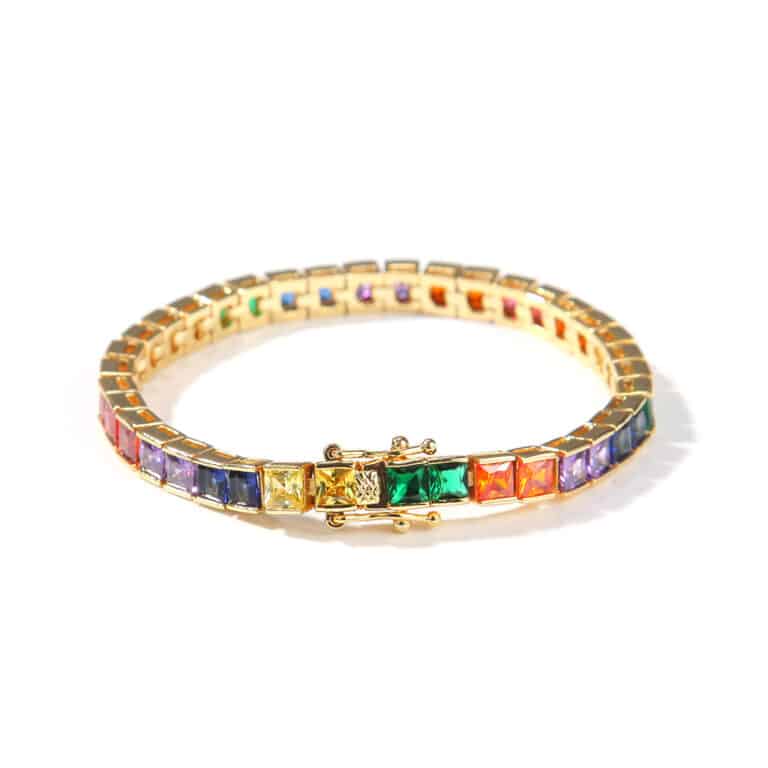
Advantages and Disadvantages of Cubic Zirconia (CZ)
Advantages:
(1) Cost:
Cubic zirconia is far more affordable than diamonds or other precious gemstones. This makes it accessible to a broader range of buyers and allows for larger or more intricate jewelry designs without the hefty price tag.
(2) Customizability:
CZ can be produced in a wide variety of colors and sizes, offering flexibility for consumers and jewelers. This versatility allows CZ to imitate not only diamonds but also colored gemstones like sapphires, rubies, and emeralds, catering to diverse aesthetic preferences.
(3) Ethics:
Being a lab-created material, CZ eliminates the ethical concerns associated with gemstone mining, such as environmental degradation and labor exploitation. Its sustainable production aligns with modern values, making it a popular choice for environmentally conscious consumers.
Disadvantages:
(1) Durability:
With a Mohs hardness rating of 8.5, CZ is not as scratch- or chip-resistant as diamonds (rated 10). While it is suitable for everyday wear, it requires more cautious handling to avoid damage, especially for rings and bracelets that endure frequent contact with hard surfaces.
(2) Appearance Over Time:
Unlike diamonds, CZ is prone to clouding due to the accumulation of oils, dirt, and exposure to chemicals. Regular cleaning and maintenance are necessary to restore its brilliance, adding to its upkeep compared to natural gemstones.
(3) Perception:
Despite its visual appeal, CZ lacks the prestige and emotional significance of natural gemstones, particularly diamonds. This perception affects its desirability for symbolic pieces like engagement rings or heirlooms.
Understanding these advantages and disadvantages allows buyers to make informed decisions. For those seeking a beautiful, affordable, and ethical alternative to diamonds, CZ offers immense value. However, those prioritizing durability, symbolism, and long-term brilliance may find natural gemstones more suitable for their needs.
Section XVII What techniques are used to enhance the appearance of cubic zirconia, such as coating?
Cubic zirconia can look even more dazzling. But how?
Techniques like diamond-like carbon (DLC) coating enhance CZ’s scratch resistance and brilliance, giving it a longer-lasting shine.
Coating cubic zirconia (CZ) with advanced materials, such as diamond-like carbon (DLC), has become a popular method to enhance its durability and visual appeal. This thin, transparent layer improves the stone’s resistance to scratches, giving it better longevity in daily wear. Additionally, the coating adds a subtle luster similar to that of diamonds, helping CZ more closely mimic the appearance of natural gemstones.
(1) Durability Benefits:
The DLC layer acts as a protective shield, reducing the visibility of minor abrasions that might otherwise dull CZ’s surface over time. While CZ on its own has a Mohs hardness of 8.5, the coating helps counter its vulnerability to scratches, extending the stone’s lifespan and maintaining its brilliance. This improvement makes coated CZ a more practical option for rings and other jewelry subjected to frequent handling.
(2) Aesthetic Enhancements:
In addition to DLC coatings, manufacturers sometimes apply optical brighteners or color treatments to CZ. These enhancements:
- • Improve clarity, minimizing any haze or cloudiness.
- • Add or adjust color to simulate rare gemstones or enhance the brilliance of the stone.
Such treatments expand CZ’s versatility, enabling it to cater to a variety of design preferences and market demands.
(3) Limitations of Coated CZ:
While coatings improve CZ’s performance, they also introduce some maintenance challenges. Over time, the protective layer can wear off, particularly if exposed to harsh chemicals, abrasive surfaces, or improper cleaning methods. To preserve the coating:
- • Avoid ultrasonic cleaners or harsh chemicals.
- • Clean gently with mild soap and a soft cloth.
- • Store coated CZ jewelry separately to prevent the coating from rubbing off against harder materials.
By addressing some of CZ’s inherent weaknesses, these treatments broaden its appeal to buyers seeking enhanced durability and aesthetics. However, they also emphasize the importance of proper care to ensure the longevity of coated CZ pieces.
Section XVIII What are the current trends for cubic zirconia in the modern jewelry market?
Cubic zirconia is more than a substitute—it’s a trendsetter. How?
Cubic zirconia is thriving in modern jewelry trends, offering bold designs and sustainable alternatives to natural stones.
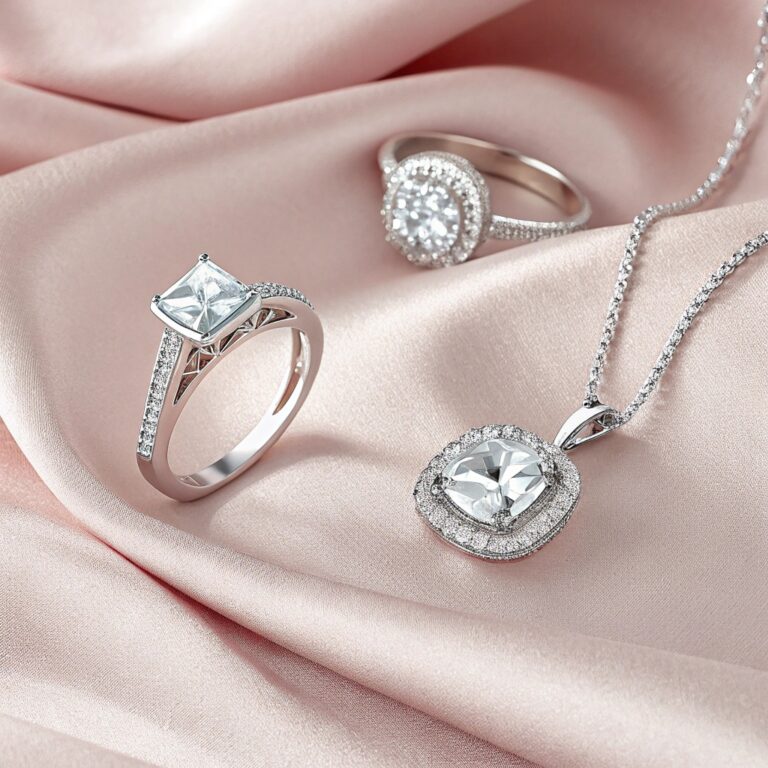
Cubic zirconia (CZ) has become a cornerstone of modern jewelry design, thanks to its unique blend of affordability, versatility, and ethical appeal. As consumers increasingly seek accessible luxury and sustainable options, CZ meets these demands while offering endless creative possibilities for designers.
(1) Popular Applications in Design:
① Minimalist Jewelry:
CZ is widely used in simple and elegant designs, such as solitaire rings, stud earrings, and delicate pendants. Its clean brilliance complements the minimalist aesthetic, appealing to buyers who value understated elegance.
② Statement Pieces:
Designers frequently use CZ in bold, eye-catching designs, including oversized cocktail rings, chandelier earrings, and layered necklaces. The affordability of CZ allows for large, intricate creations that make a dramatic impact without the high cost of natural gemstones.
③ Mixed-Metal Trends:
CZ pairs beautifully with various metals, from classic sterling silver and yellow gold to contemporary rose gold and platinum. This versatility enables innovative designs that cater to diverse tastes and preferences.
(2) Ethical and Sustainable Appeal:
CZ’s lab-grown origin aligns with the rising consumer demand for ethical and eco-friendly jewelry. Unlike mined gemstones, CZ production avoids environmental disruption and labor concerns, making it a responsible choice for environmentally conscious buyers. Its accessibility further democratizes high-quality jewelry, enabling more consumers to enjoy sustainable luxury.
(3) Creative Opportunities for Designers:
① Unconventional Colors:
CZ’s ability to mimic gemstones in a variety of hues—such as vibrant pinks, rich blues, and vivid greens—empowers designers to experiment with bold and unique palettes. These colors cater to fashion-forward consumers looking for something distinct and playful.
② Innovative Shapes:
Advanced cutting techniques allow CZ to be crafted into unconventional shapes, such as geometric cuts and asymmetrical forms. These innovations keep CZ relevant in avant-garde and trend-driven collections.
③ Enhanced Durability:
Recent advancements in coating technologies, such as diamond-like carbon (DLC) coatings, add durability and a diamond-like luster to CZ, elevating its appeal for both everyday and high-end jewelry.
(4) Why CZ is a Staple:
Cubic zirconia’s adaptability makes it equally at home in everyday essentials and luxury statement pieces. Its combination of affordability, ethical sourcing, and design versatility ensures that it remains a favorite among both designers and consumers, solidifying its status as a staple in contemporary jewelry collections.
Section XIX How does cubic zirconia compare to moissanite, another synthetic gemstone?
Cubic zirconia isn’t the only diamond alternative. How does it stack up against moissanite?
Moissanite surpasses cubic zirconia in hardness, brilliance, and thermal conductivity but is more expensive.
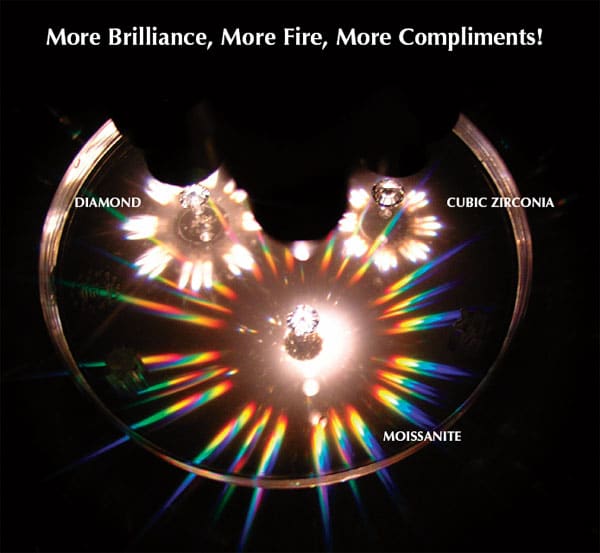
Moissanite and cubic zirconia (CZ) are both popular diamond alternatives, but their distinct properties make them suited to different consumer needs. While CZ prioritizes affordability, moissanite excels in performance and durability, offering buyers unique advantages at a higher price point.
(1) Durability and Hardness:
Moissanite, composed of silicon carbide, scores 9.25 on the Mohs scale, making it harder than CZ (8.5). This superior hardness means moissanite is more resistant to scratches and wear, ensuring it retains its brilliance over time, even with frequent use. In contrast, CZ, though durable, requires more careful handling and maintenance to avoid damage from everyday activities.
(2) Optical Brilliance:
Moissanite outshines both CZ and diamonds in terms of brilliance, boasting a refractive index of 2.65–2.69 compared to CZ’s 2.15–2.18 and diamonds’ 2.42. This higher refractive index gives moissanite an intense sparkle with a pronounced “fire,” or rainbow-like dispersion. While CZ offers strong dispersion as well, its brilliance is more subdued than moissanite’s, appealing to consumers who prefer a more natural look.
(3) Heat Conductivity:
Like diamonds, moissanite conducts heat efficiently, making it challenging to distinguish from natural diamonds using standard thermal conductivity testers. CZ, being a thermal insulator, is easily identified in such tests. Advanced equipment, such as moissanite-specific testers, is often required to differentiate moissanite from diamonds.
(4) Affordability and Accessibility:
Moissanite’s superior properties come with a higher price tag, making it less accessible to budget-conscious buyers. CZ, as a lab-created and mass-produced material, offers an affordable alternative that closely mimics the appearance of diamonds, making it ideal for fashion jewelry and everyday wear.
Key Comparisons
| Mülkiyet | Kübik Zirkonya (CZ) | Moissanite | Elmas |
|---|---|---|---|
| Kompozisyon | Zirconium dioxide (ZrO₂) | Silicon carbide (SiC) | Karbon (C) |
| Sertlik (Mohs) | 8.5 | 9.25 | 10 |
| Kırılma İndisi | 2.15 – 2.18 | 2.65 – 2.69 | 2.42 |
| Dağılım (Yangın) | 0.058 – 0.066 | 0.104 | 0.044 |
| Thermal Conductivity | Low (Insulator) | High (Conductor) | High (Conductor) |
| Cost | Düşük | Moderate to high | Very high |
(5) Choosing Between Moissanite and CZ:
Consumers seeking a durable, high-performance stone with unmatched brilliance may gravitate toward moissanite, especially for significant pieces like engagement rings. On the other hand, those prioritizing affordability and versatility will find CZ an excellent choice for fashion jewelry or budget-friendly diamond alternatives. Both materials offer value, catering to distinct tastes and financial considerations.
Section XX What should be considered when buying cubic zirconia jewelry, such as quality, cut, and setting?
How can you ensure you’re getting the best cubic zirconia jewelry?
When buying CZ jewelry, prioritize quality grading, precise cuts, and durable settings to maximize value.

Selecting cubic zirconia (CZ) jewelry involves more than just its appearance. Understanding the factors that affect its quality, durability, and aesthetic appeal ensures you make an informed choice and enjoy a piece that lasts. Here are the key elements to focus on:
(1) Grading:
CZ stones are graded on a scale that evaluates clarity, cut, and brilliance. Higher-grade stones, such as AAAAA, are nearly flawless, offering exceptional sparkle and durability. In contrast, lower-grade stones may have visible imperfections and less luster. Buyers looking for premium pieces should prioritize higher grades to achieve maximum brilliance and longevity.
(2) Cut:
The cut of a CZ stone plays a crucial role in its ability to reflect light. Precision cutting ensures that the facets are perfectly aligned, enhancing the stone’s sparkle and fire. Popular cuts like round, princess, and oval are designed to maximize light dispersion, giving the stone a dazzling appearance similar to diamonds. Poorly cut stones, however, can appear dull or lifeless.
(3) Setting:
The choice of setting affects both the beauty and protection of the CZ stone.
- Protective Settings: Opt for bezels or prongs that secure the stone firmly and reduce its exposure to potential impacts.
- Design Integrity: A well-crafted setting not only holds the stone securely but also complements its shape and enhances its overall presentation.
(4) Metal Choice:
The type of metal used in the jewelry impacts both durability and aesthetic appeal.
- Precious Metals: Gold, platinum, and sterling silver provide a luxurious and durable base for CZ, resisting tarnish and wear over time.
- Plated Metals: For budget-friendly options, plated metals can be used, though they may require more maintenance.
(5) Maintenance:
To maintain brilliance over time, proper care is essential. Regular cleaning with mild soap and a soft brush, along with safe storage in a soft pouch or separate compartment, helps prevent scratches and clouding.
Summary: Key Considerations for CZ Jewelry
| Factor | Recommendation |
|---|---|
| Grading | Choose AAAAA-grade stones for maximum brilliance and longevity. |
| Kesmek | Look for precision cuts (e.g., round or princess) to ensure optimal sparkle. |
| Setting | Opt for protective settings like bezels or secure prongs to minimize damage risk. |
| Metal Choice | Use durable metals like gold, platinum, or sterling silver for a refined look. |
| Maintenance | Regular cleaning and proper storage maintain the jewelry’s shine and durability. |
(6) Conclusion
Cubic zirconia offers unmatched versatility and affordability in the world of gemstones. Its blend of beauty and practicality makes it a timeless choice for jewelry enthusiasts and trendsetters alike.








